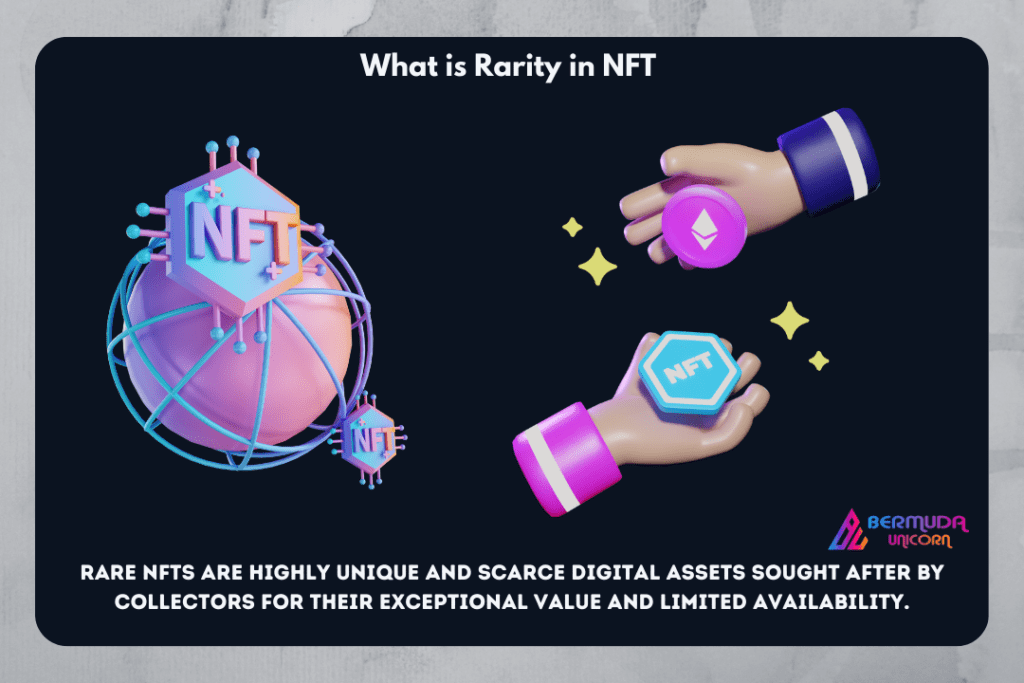![]()

In the realm of blockchain-powered art and collectibles, one concept reigns supreme: NFT Rarity. The scarcity of these unique digital assets plays a defining role in their allure. value within the crypto community. Investors and collectors are eagerly waiting to learn. how to check the rarity of NFTs and try to understand the contribution of uniqueness in it. In this article, we will come to know about the NFT Rarity, which delves into NFT Rarity Scoring. uncover to evaluate the rarity of these converted digital assets.
Understanding NFT Rarity
NFT Rarity revolves around the singularity, setting it apart from fungible and interchangeable cryptocurrencies like Ethereum and Bitcoin. With each non-fungible token displaying a distinct identity, anchored in blockchain technology, it guarantees a verifiable and unalterable record of ownership. This distinctiveness makes NFTs unique and highly sought-after in the digital world of collectibles and art.
NFTs captivate with their capacity to represent genuine ownership of digital assets. Moreover, the blockchain records each NFT with a distinct token ID, making replication or counterfeiting impossible and transforming each NFT into a unique item. As a result, the scarcity and verifiable authenticity of NFTs are igniting a revolution in the realms of art, gaming, and virtual real estate. In this new era, creators can now monetize their digital creations, while collectors proudly hold rare and exclusive assets, shaping the landscape of digital ownership and creativity.

NFT scarcity originates from two main factors: limited editions and rarity attributes, both of which contribute to enhancing its exclusivity. Limited editions entail minting only a predetermined number of tokens, creating a finite supply for a particular NFT. Additionally, rarity attributes, such as unique characteristics or historical significance, further add to the exclusiveness of an NFT. As a result, scarcer NFTs become highly desirable among collectors and investors, leading to increased demand and higher prices in the market.
NFT Scoring and How to Check Rarity of NFT
Evaluating the rarity of an NFT can be an exciting endeavor, but it requires some essential tools and knowledge. Here’s how to embark on your journey of discovering the rarity of NFTs:
1. NFT Rarity Checker Tools
Online platforms and marketplaces often offer NFT Rarity Checker tools, enabling you to access essential information about a token’s rarity. These tools can reveal insights into the total supply, remaining editions, and the NFT rare checker of specific attributes associated with the NFT. For instance, some projects use an algorithmic rarity scoring system that takes into account attributes, traits, and supply to determine the overall rarity of a token.
2. Blockchain Explorer
Embark on a journey into the world of blockchain through the use of a Blockchain Explorer, tailored to the platform where the NFT was minted. With this explorer, you can delve deeper and search for the NFT contract, bringing to light crucial details such as the total supply and individual token IDs. Specifically, for Ethereum-based NFTs, platforms like Etherscan offer a transparent view of the smart contract, presenting a comprehensive record of all token transactions and ownership history. By utilizing these tools, you gain valuable insights into the NFT’s origins and its journey through the blockchain, enriching your understanding of the digital asset’s rarity and history.
3. Community Insights
To understand rarity of NFTs, engage with the community on social media and forums. They share valuable insights about specific NFT scarcity. Explore resources like rarity calculators for deeper insights into rarity and value of NFTs. Participate in interactions to tap into collective expertise and stay informed about NFT trends.
4. Marketplace Data
Visit NFT marketplaces listing the asset for sale. Observe trading volume, price history, and editions sold. These indicators reveal rarity and demand. Some marketplaces display rarity information, showing an NFT’s exclusivity within the collection.
5. Trait and Attribute Analysis
For NFTs with traits or attributes, explore the metadata associated with the token. Some marketplaces showcase the rarity of each trait, aiding you in assessing the overall rarity of the NFT. Certain traits might be more or less common, affecting the overall scarcity and value of the NFT. Additionally, verify whether the attributes of the NFT align with the creator’s original vision or if they have been manipulated to enhance rarity artificially.

Decoding NFT Rarity
Gather data from diverse sources. Develop a keen eye to assess NFT rarity. Consider limited editions, unique traits, historical significance, and creator popularity. Factor in demand and market trends for rarity and long-term value evaluation.
Rarity NFT is not static but dynamic, influenced by the market as demand and supply change. An NFT considered rare might lose scarcity with more editions minted or if its attributes become common. Conversely, an initially overlooked NFT could gain rarity status through increased recognition or cultural significance.
Conclusion
NFT rarity is a crucial aspect of the digital collectibles world. It excites collectors and enthusiasts and adds value to these unique items. With the right knowledge and tools, you can explore the world of blockchain creativity with confidence. Enjoy the excitement of searching for the rarest and most extraordinary NFTs in this ever-changing digital realm!
As NFTs continue to evolve, rarity will remain essential in shaping digital ownership and creative expression. Embrace the digital world and explore NFT rarity, where you’ll discover rare and valuable gems cherished by collectors worldwide.
